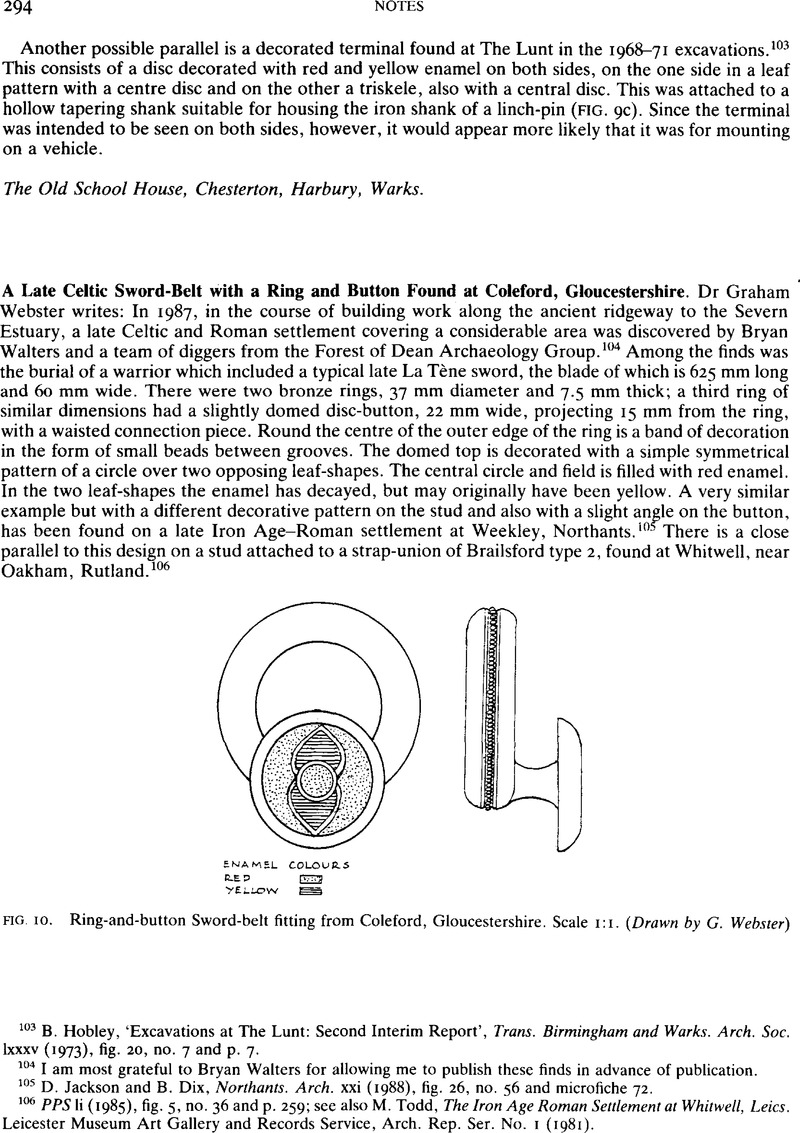No CrossRef data available.
Published online by Cambridge University Press: 09 November 2011

107 Andreas, and Müller-Karpe, Michael, ‘Neue latènezeitliche Funde aus dem Heidetränk-Oppidum’, Germania lv (1977), Abb. 1, No. 12–19.Google Scholar
108 Collis, J.R., ‘Burials and Weapons in Iron Age Britain’, Germania li (1973), 127–33.Google Scholar
109 Brailsford, J.W., Hod Hill i (1962), pl. xi I 97 and p. 17.Google Scholar
110 Arch. Journ. cxv (1960), fig. 3, p. 71, No. 14 and p. 70.
111 In the Pollexfen Coll. in the BM (Ace. No. 70, 4–2, 75). There is a small example in the Colchester Museum (Ace. No. 176).
112 Anderson, A.-S. and Wacher, J.S., Britannia xi (1980), fig. 4, No. 3 and p. 123.Google Scholar
113 K.A. Rodwell, The Prehistoric and Roman settlement at Kelvedon, Essex, CBA Research Report, No. 63 (1988), fig. 46, No. 40 and MF 1. CIO; see also p. 135 for a discussion on the military phase.
114 Graham Webster, The Roman Invasion of Britain (1980), Map V; idem, Rome against Caratacus (1981), fig. 38, p. 109.
115 Ace. no. 89.288. I should like to thank Robert Trett and Rodney Hudson, Curator and Assistant Keeper of Archaeology, Newport Museum and Art Gallery, for drawing my attention to this piece and for their extensive discussion of it with me.
116 Zienkiewicz, J.D., The Legionary Fortress Baths at Caerleon, vol. II, The Finds (N.M.W./CADW, 1986), 177–9, no.59, fig.58.Google Scholar
117 Janet Webster in D. Evans and V. Metcalf, Excavation at the Roman Gates site in the Fortress of the Second Legion at Caerleon, Gwent: Excavations of Barracks and Evidence for early Mediaeval Activity BAR, No. 2 of the bronze report.
118 Toynbee, J.M.C., Art in Britain under the Romans (Oxford, 1964), 66–7Google Scholar , pl. xiva. British Museum Ace. no. 71.6–1.1.
119 Pausanias, Description of Hellas i, 24, 5.